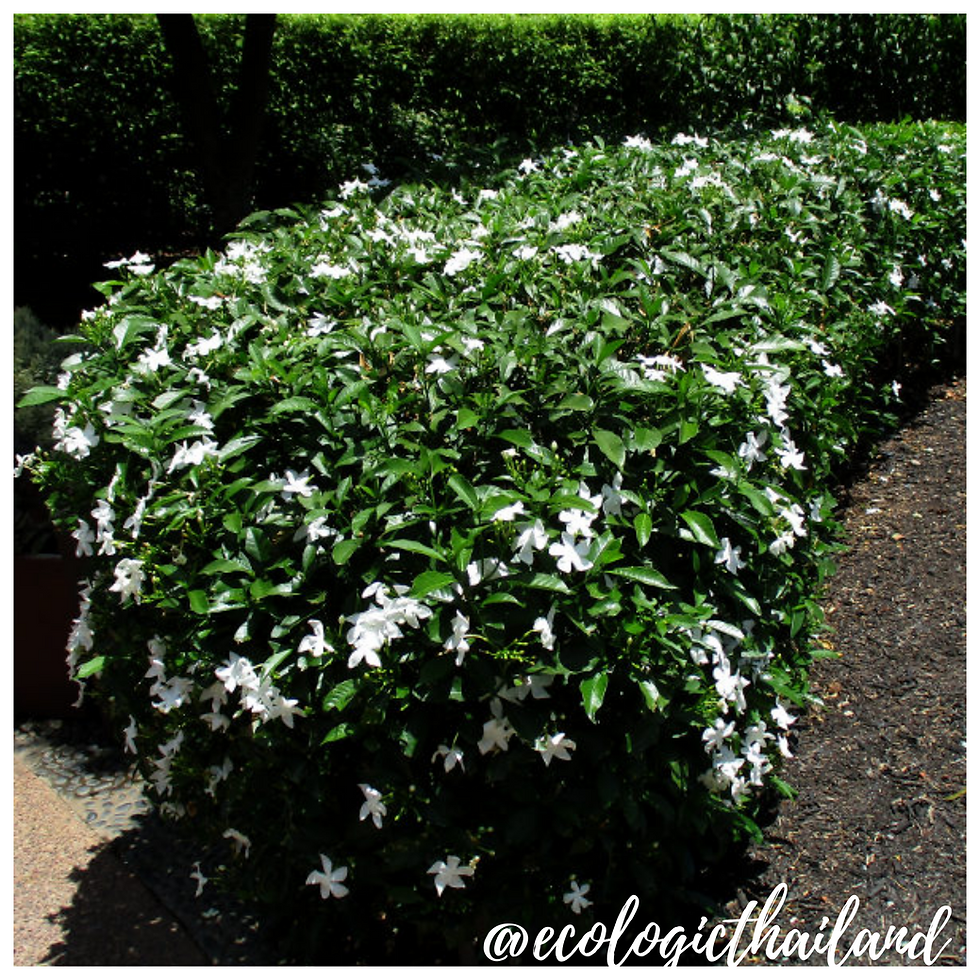Dille
- Eco-Logic Resort
- Jan 1, 2021
- 2 min read
Phak Chee Lau | ผักชีลาว | Anethum graveolens
Family: Apiaceae - Genus: Anethum

The area in between the cat fish tanks and the aqua hydroponic greenhouse is where you will find a lot of dille. And in the area in front of the restaurant of Eco-Logic.
Dill is an annual herb in the celery family Apiaceae. Dill is grown all over the world and its leaves and seeds are used as a herb or spice for flavoring food.
Fresh and dried dill leaves (sometimes called "dill weed" or "dillweed" to distinguish it from dill seed).
Dill can be harvested the whole year through in Paksong.

THE PLANT
Dill grows up to 40–60 centimeter, with slender hollow stems.

THE LEAVES
The dill leaves are alternate, finely divided, softly delicate leaves 10–20 centimeter long. The ultimate leaf divisions are 1–2 mm broad.

THE FLOWERS
Dill flowers are white to yellow, in small umbels 2–9 centimeter diameter.
The dill flowers are edible.

THE SEEDS
The dill seeds are 4–5 mm long and 1 mm thick, and straight to slightly curved with a longitudinally ridged surface
CULINARY USES
In Laos and parts of Thailand, dill is known in English as Lao coriander (Pakchee Lao ผักชีลาว), and served as a side with salad yum or papaya salad. It is also used in omelets.
Dill is best when used fresh, as it loses its flavor rapidly if dried,
The flowers are also edible..
NUTRITION
Fresh dill is very low in calories, yet a surprisingly good source of several essential vitamins and minerals, including vitamin C, manganese, and vitamin A ( 2 ).
TRADITIONAL MEDICINAL USE
NOTE: please take advice from a doctor if you are planning to use herbal medicine.
Dill is a medicinal herb that has been used for more than 2000 years. The fruits (seeds) are carminative, stomachic, digestive, and tranquilizing, and have been traditionally used for treating stomach ailments, colic, hiccups, bad breath, flatulence, and hemorrhoids.
INTO THE WILD: a down to earth experience

For guests and visitors to Paksong we organize weekly tours "The Edible Forest" and Foraging weekends: Into the Wild. We work with local guides to take you in the jungle of Paksong. After foraging, we will cook a meal with the ingredients, using bamboo together with you!
Come and join and learn about the abundance of food that nature gives us!
INTO THE WILD!


















Comments